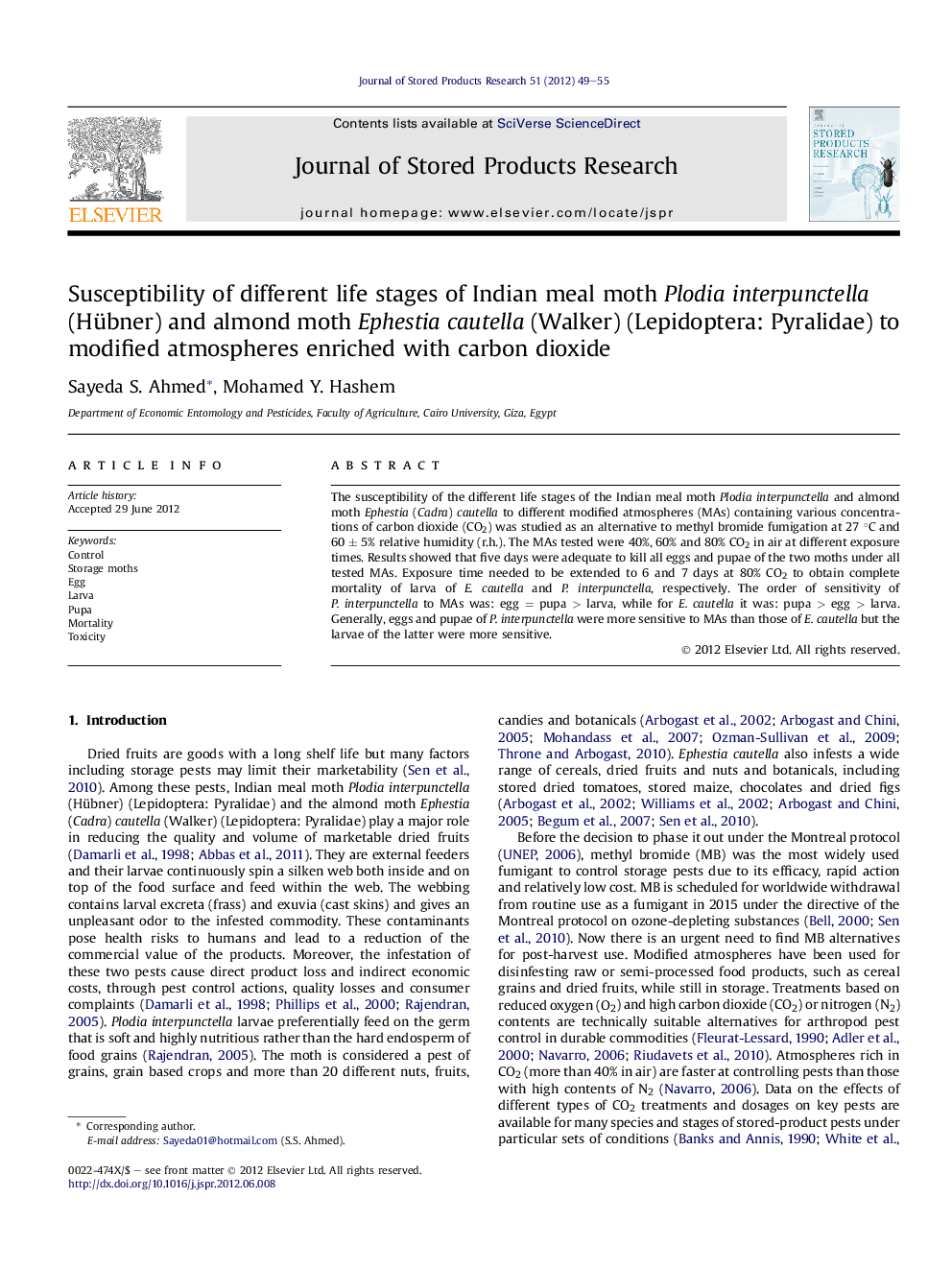| کد مقاله | کد نشریه | سال انتشار | مقاله انگلیسی | نسخه تمام متن |
|---|---|---|---|---|
| 4517163 | 1624937 | 2012 | 7 صفحه PDF | دانلود رایگان |

The susceptibility of the different life stages of the Indian meal moth Plodia interpunctella and almond moth Ephestia (Cadra) cautella to different modified atmospheres (MAs) containing various concentrations of carbon dioxide (CO2) was studied as an alternative to methyl bromide fumigation at 27 °C and 60 ± 5% relative humidity (r.h.). The MAs tested were 40%, 60% and 80% CO2 in air at different exposure times. Results showed that five days were adequate to kill all eggs and pupae of the two moths under all tested MAs. Exposure time needed to be extended to 6 and 7 days at 80% CO2 to obtain complete mortality of larva of E. cautella and P. interpunctella, respectively. The order of sensitivity of P. interpunctella to MAs was: egg = pupa > larva, while for E. cautella it was: pupa > egg > larva. Generally, eggs and pupae of P. interpunctella were more sensitive to MAs than those of E. cautella but the larvae of the latter were more sensitive.
► Five days were adequate to completely kill eggs and pupae of the two moths.
► Exposure time could be extended to 7 days to obtain a complete mortality in larvae.
► The sensitivity of Plodia interpunctella to MAs ordered as, egg = pupa > larva.
► The sensitivity order to MAs was pupa > egg > larva in Ephestia cautella.
Journal: Journal of Stored Products Research - Volume 51, October 2012, Pages 49–55